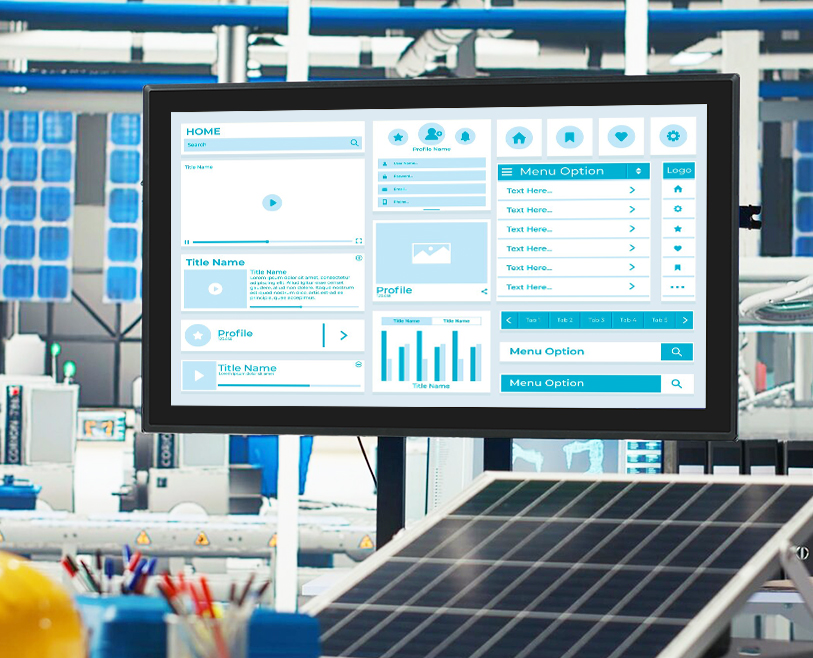Pour les personnes vivant avec le diabète, les pompes à insuline sont des outils essentiels qui délivrent des doses précises d'insuline pour maintenir une glycémie stable. At the heart of modern pumps is the Insulin Pump Touch Screen—a interface that turns complex dosing adjustments, data tracking, and settings management into simple, intuitive actions. Unlike older button-based pumps that require navigating clunky menus, touch screens with easy-read displays let users (including those with visual impairments or dexterity challenges) access critical information—like current dose, blood sugar logs, or low-battery alerts—at a glance. This guide explores how Insulin Pump Touch Screen systems with easy-read displays enhance diabetes care, their key features, and what to consider when choosing one—helping users prioritize convenience, précision, and peace of mind.

Key Benefits of Insulin Pump Touch Screens with Easy-Read Displays
1. Simplified Dosing for Accurate Insulin Delivery
One-tap adjustments: Users can increase or decrease basal/bolus doses with a simple tap or swipe, instead of pressing multiple buttons. This reduces the risk of dosing errors (a common issue with button-based pumps) that can lead to high or low blood sugar.
Visual dose confirmation: The easy-read display shows the selected dose in large, bold text (14pt+ font) before delivery—letting users double-check and avoid accidental over-dosing.
Dose calculators: Built-in calculators (for carb-counting or correction doses) appear on the touch screen with clear prompts (par exemple., “Enter carbs eaten”)—simplifying math that’s often stressful for users.
2. Insulin Pump Touch Screen Clear Visibility for All Users
High contrast & brightness control: Easy-read displays use high-contrast color schemes (par exemple., black text on white background) and adjustable brightness—making text visible in bright sunlight (par exemple., outdoors) or low light (par exemple., at night).
Zoom functionality: Users can pinch-to-zoom on text or graphs (par exemple., 7-day blood sugar trends) to enlarge details—critical for those with mild to moderate visual impairments.
Backlit screens: The touch screen stays backlit for 5–10 seconds after each tap, so users don’t struggle to read it in dim environments (par exemple., a dark bedroom).
3. Streamlined Data Tracking & Management
Touch-enabled logs: Users can tap to log blood sugar readings, meals, or exercise directly on the screen—no more manual paper logs or separate apps. Data syncs automatically to a companion app (via Bluetooth) for long-term tracking.
Trend graphs: Easy-read displays show blood sugar trends as simple line graphs (with color-coded zones: green = normal, red = low/high) instead of confusing tables. This helps users spot patterns (par exemple., “My sugar drops after lunch”) quickly.
Alert clarity: Low battery, insulin low, or missed dose alerts pop up as large, flashing messages on the touch screen—harder to miss than beeps from older pumps.
Essential Features to Look for in an Insulin Pump Touch Screen
1. Durabilité & Portability
Water resistance: Look for IP67 or IP68 ratings—these let the pump (and touch screen) withstand accidental splashes (par exemple., handwashing) or short submersion (par exemple., a dropped pump in a sink).
Impact resistance: The touch screen should have a scratch-resistant coating (par exemple., Verre de gorille) to handle daily wear (par exemple., being in a pocket or purse) without cracking.
Compact design: A slim, lightweight touch screen (under 50g) ensures the pump is comfortable to wear (par exemple., on a belt or in a pocket) all day.
2. Accessibility Features
Voice control compatibility: Some touch screens work with voice assistants (par exemple., Siri, Google Assistant) for users who struggle with touch inputs (par exemple., arthritis). This lets users say, “Set a bolus dose of 2 units” instead of tapping.
Customizable interfaces: Users can adjust text size, contraste, or button layout to fit their needs—e.g., larger buttons for those with dexterity issues.
Long battery life: The touch screen should run on a rechargeable battery that lasts 2–3 days (with regular use) to avoid frequent charging interruptions.
3. Connectivité & Compatibility
Bluetooth sync: The touch screen should sync seamlessly with blood glucose meters (BGMs) or continuous glucose monitors (CGMs) to auto-fill blood sugar data—eliminating manual entry errors.
App integration: Ensure the pump’s touch screen works with a user-friendly companion app (for iOS/Android) to let users share data with caregivers or healthcare providers.
Mises à jour logicielles: The touch screen should support over-the-air (OTA) updates—so users get new features (par exemple., improved calculators) or bug fixes without replacing the pump.
FAQs About Insulin Pump Touch Screens
T1: Can I use an Insulin Pump Touch Screen if I have dexterity issues (par exemple., arthritis)?
A1: Yes—many models have larger touch targets (10mm×10mm+) and adjustable touch sensitivity, making it easier to tap accurately. Some also support voice control for hands-free operation.
T2: How often do I need to clean the touch screen?
A2: Wipe the screen with a dry microfiber cloth once a day to remove dirt or oil. For deeper cleaning, use a cloth dampened with 70% isopropyl alcohol (avoid harsh cleaners like bleach).
T3: What if the touch screen stops working suddenly?
A3: Most pumps have a backup button (hidden in the battery compartment) to access basic functions (par exemple., dose delivery) while troubleshooting. Contact the manufacturer’s support team for repairs—most offer 24/7 assistance.
T4: Is the easy-read display visible for users with color blindness?
A4: Yes—top models use color-blind-friendly palettes (par exemple., using patterns instead of just colors for trend zones) to ensure all users can interpret data correctly.
Conclusion
An Insulin Pump Touch Screen with an easy-read display transforms diabetes management from a stressful task into a simple, manageable one. By prioritizing features like clear visibility, durabilité, and accessibility, users can choose a pump that fits their lifestyle and helps them maintain stable blood sugar levels with confidence.
If you’re looking for an insulin pump with a reliable, user-friendly touch screen (or need help comparing models), Remplissez le formulaire sur notre site Web. Our diabetes technology experts will assess your needs (par exemple., visual/dexterity requirements, connectivity preferences) and recommend the ideal Insulin Pump Touch Screen solution for you.


